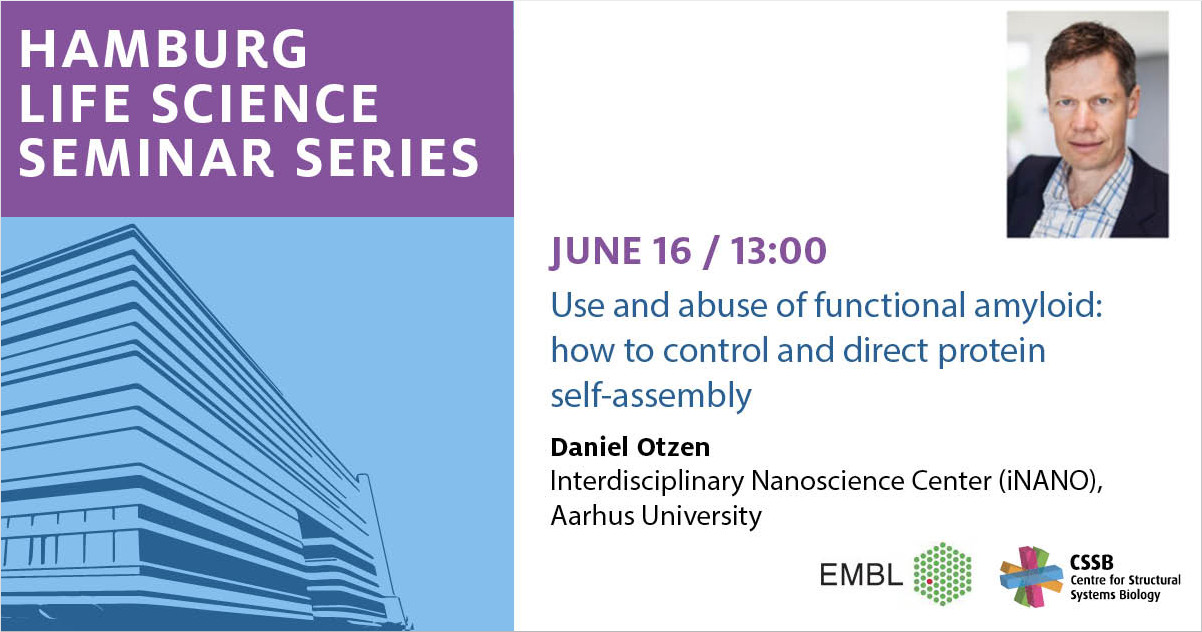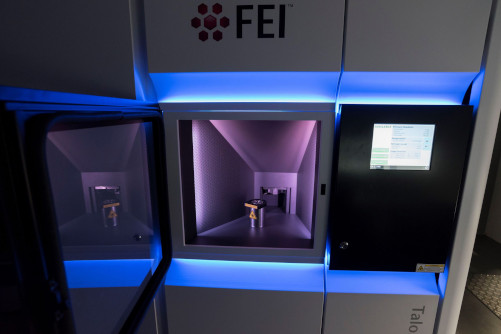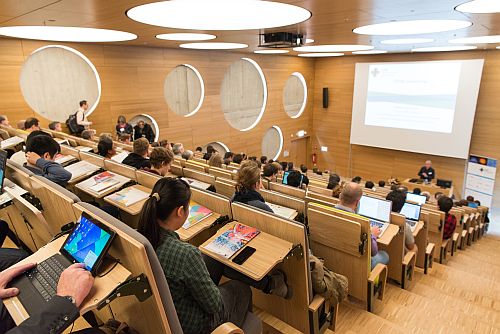Hamburg Life Science Seminar Series - DANIEL OTZEN
On June 16, Daniel Otzen from Aarhus University will give a seminar as part of the new Hamburg Life Science Seminar Series.
This new seminar series, hosted by EMBL and CSSB, looks to strengthen Hamburg’s growing life science community and provide our PhD students and postdoctoral researchers with exciting new networking opportunities.
Everyone is welcome to attend!

Abstract:
In contrast to the pathological amyloid associated with neurodegenerative diseases, functional amyloid are a showcase of protein self-assembly occurring with great efficiency and usefulness in many different organisms. They are particularly widespread in bacteria (FuBA) where work in particular on the E. coli curli and Pseudomonas Fap operons have uncovered simple and robust principles for controlled amyloid biogenesis. Fibrils, largely composed of one protein (E. coli CsgA or Pseudomonas FapC), extend from the surface of the outer membrane, assembled by transport through a dedicated export channel with associated anchoring proteins, periplasmic aggregation inhibitors and surface nucleators and increasing the mechanical strength of the bacterial biofilm. Their repetitive surfaces also make them potentially interesting protein-based catalysts although research on hat is still at an early stage. FuBA are optimized for aggregation through imperfect repeats, each of which can form one layer in a β-helix and lead to a fast-track fibrillation involving nucleation and elongation. Each of these steps involves essentially the same level of folding at the monomer level. Removal of the repeats increases the tendency to fragment and destabilize the fibrils. The amyloid structure is recapitulated and enhanced when the protein is presented with a structured surface such as graphene which is covered in a very comprehensive and highly regular fashion by the amyloid. FUBA’s robustness notwithstanding, they are sensitive to inhibition, not only by generic amyloid blockers such as the polyphenol EGCG and protein chaperones, but also by designed peptides which divert the amyloidogenic proteins towards more amorphous and weakly organized aggregates. This inhibition reduces biofilm formation and opens up for more efficient intervention against bacterial growth in combination with more conventional antibiotics.



